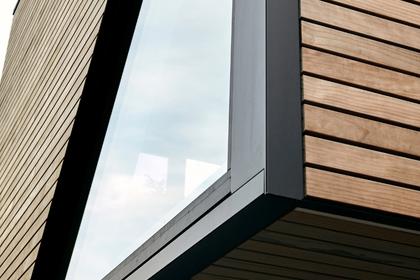
Timber-frame Extensions
Show productsA timber-frame extension or extra storey: a simple way to expand an existing building and add to the value of a property. By choosing a timber-frame construction, you can add an extra room or an office in a relatively short space of time.
A smart solution for a renovation or if you need more space
Our society is changing fast. Working from home, an addition to the family; many people need more living space but don’t want to move. Adding a wooden home extension could be one solution for creating bedrooms, a bathroom or a playroom for the children. It can also be used to convert a single-family home into a multi-generational one.
There is no end of functions a timber-frame extension can perform! So when buying a house to do up, it’s good to keep in mind the possibility of a timber-frame extension. If there is no room to extend to the side or rear but the existing building feels a little too small, a timber-frame storey or upward extension is a good option. This is also an ideal solution for schools and businesses that need extra space but don’t have spare land.


Timber-frame storey extension
With a timber-frame upward extension, the biggest space gains are to be made if the building has a flat roof. You can increase the surface area by 30% on average. There are still several options for adding an extra storey to a building with a pitched roof. For example, you could consider raising the roof if the current one could do with renovating. Another possibility is to remove part of the roof only and to add an extra storey there. This option is often chosen when there is not enough space to build an entire new floor.
Carpentier makes prefabricated elements for timber-frame upward extensions in its workshop and then delivers them to the building site as a timber-frame construction in kit. As a wood-build professional or developer, you can thus add an extra storey and have the roof on and windows and doors in very quickly. And since this is a dry construction method, you can get on with fitting interior and exterior finishes straight away.
The three main advantages for owners
-
It is a quick and efficient way to create more space without investing in a new construction. This enables owners to make major savings.
-
A timber-frame extension improves the look of a building. The existing structure can be given a makeover. The additional living area and surface area will also increase the value of the house.
-
When adding a storey, inhabitants can remain in their home while the work is done. A timber-frame upward extension can be added quickly and efficiently without too much upheaval.
The advantages for professionals
Wood is a light construction material, which applies minimal pressure to the foundations of existing buildings. So a timber-frame storey extension can be added on lighter foundations. This is an ideal solution for older structures, for which the possible future addition of heavy new storeys was not factored into foundations and technical elements.
The other advantage of a timber-frame upward extension is that it can be built very quickly. Thanks to the high speed at which timber-frame walls can be manufactured and delivered in a kit form, and then assembled on-site, there is less lifting work and fewer people are required. This means you can deliver in a shorter time and move on to the next building site more quickly. It’s a win-win situation for both builder and client.
The alternative for pitched roofs: the dormer window
For a storey with a pitched roof, one option is to install a dormer window. A dormer creates useful extra space and makes a room lighter and more functional. We can prepare fully bespoke, prefabricated dormer windows in the workshop of our family firm and deliver them in kit form to the building site. All the prefabricated elements are numbered and assembly instructions are included, meaning you, as a professional, can fit the timber-frame structure easily on-site.


Upwards extensions: the future trend
The fact that the government has declared a stop to the artificialisation of land by 2050 is another argument in favour of storey extensions to create extra living and working space. Adding a storey offers incredible possibilities and a smart solution to the constant and growing demand for space. Upward extensions on existing buildings also lead to a more efficient use of the available space. Timber-frame extensions of this kind seem to have a bright future ahead of them.
